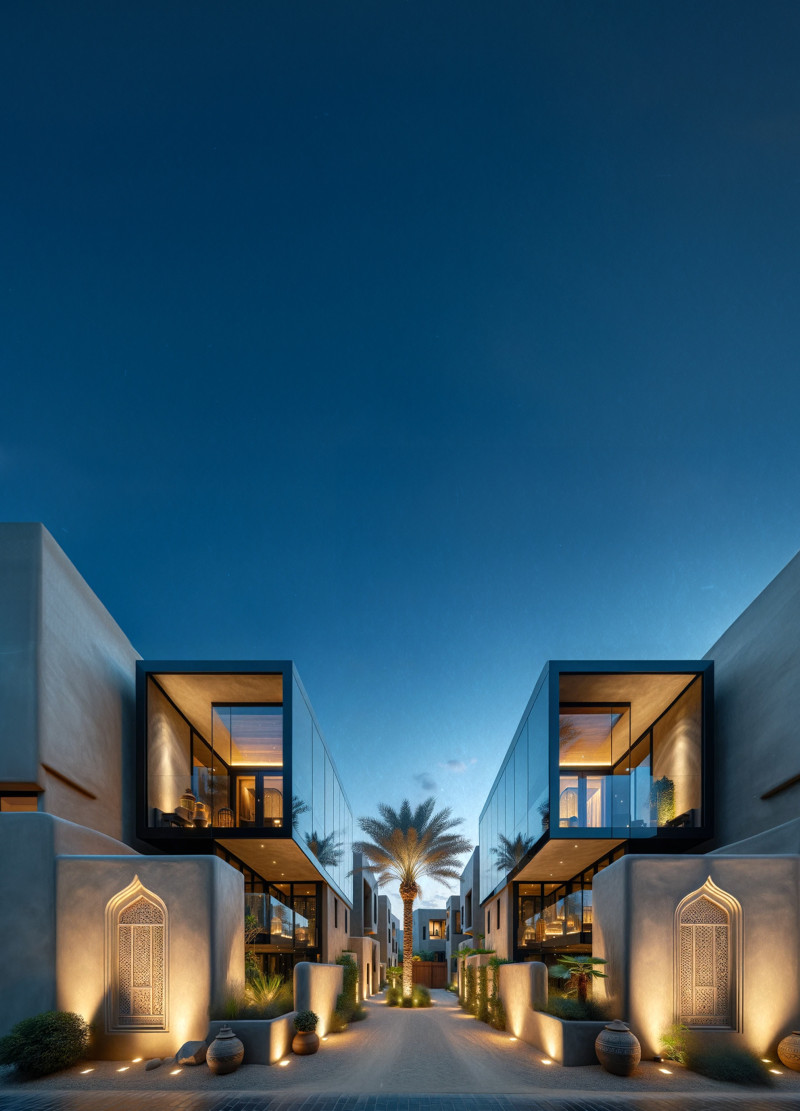5 key facts about this project
At its core, this architectural endeavor serves multiple functions, catering not only to practical needs but also to the social dynamics of the surrounding area. The design facilitates various activities, promoting interaction among users while maintaining a sense of individuality for each space. Flowing from the exterior to the interior, the architecture ensures seamless transitions that enhance usability and foster connections.
The exterior of the project showcases a contemporary yet timeless design that compliments its surroundings. A combination of materials such as glass, wood, and concrete provides a rich texture, while large windows invite natural light and encourage the outdoors to blend with the indoors. This careful selection of materials is pivotal in achieving energy efficiency; the building utilizes passive solar principles, including strategic overhangs and orientation to optimize thermal performance.
Inside, the project features open floor plans that allow flexibility and adaptability, accommodating a variety of uses over time. This design choice reflects a keen understanding of not just current needs but also future possibilities. Thoughtfully placed communal spaces, meeting rooms, and quiet areas highlight the versatility of the interior while fostering community interaction. Each area is designed with meticulous attention to detail, ensuring that users feel comfortable and inspired.
Unique design approaches can be observed in the building's integration with the landscape. The project harmonizes with its site, reinforcing a connection between the structure and its natural surroundings. Landscaping initiatives, such as native plantings and green roofs, work in tandem with the architecture to enhance biodiversity and provide habitats for local wildlife. This not only contributes to the ecological health of the area but also serves to educate and engage the community regarding the importance of sustainable practices.
Incorporating local materials into the construction further reinforces the project's commitment to its geographical context. Elements reflecting the heritage and history of the site are seamlessly woven into the design, establishing a dialogue between the past and present. This not only roots the building in its locale but also promotes local craftsmanship, providing an economic benefit to the community.
Aspects of accessibility and inclusivity have also been carefully considered throughout the design. Ramps, clear signage, and well-planned circulation paths ensure that all users can navigate the spaces with ease. The attention to inclusive design principles signifies a commitment to welcoming diverse groups, making the architecture a true community space.
Overall, this architectural project offers a comprehensive blend of functionality, sustainability, and cultural relevance. It stands as a testament to thoughtful design that prioritizes user experience while respecting its environmental and contextual parameters. For those interested in delving deeper into the specifics of the architectural design, exploring the architectural plans, architectural sections, and other architectural ideas related to this project will provide valuable insights into the meticulous thought process behind the design. This exploration can enrich one’s understanding of how thoughtful architecture can effectively respond to both its users and its surroundings.


























